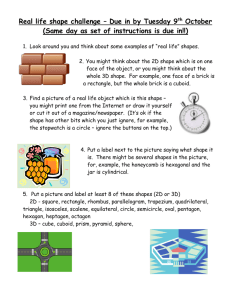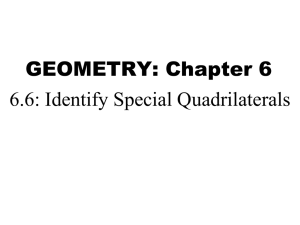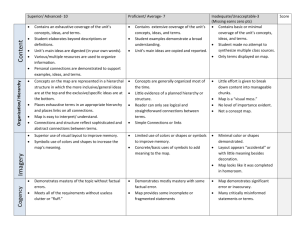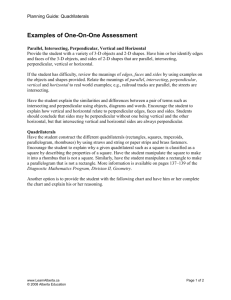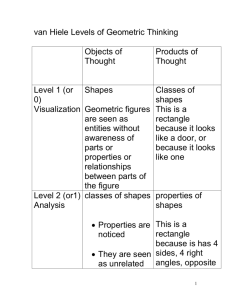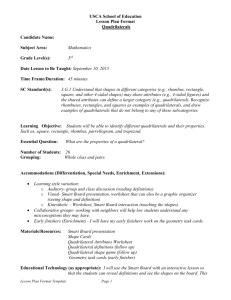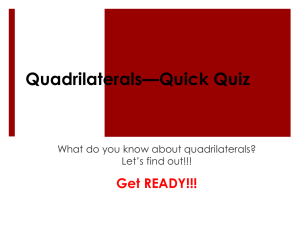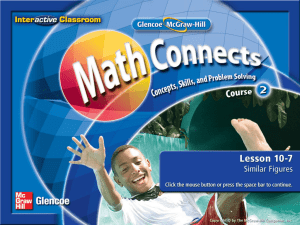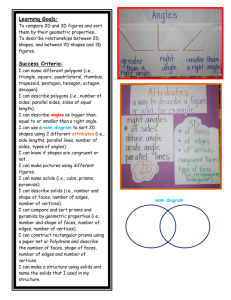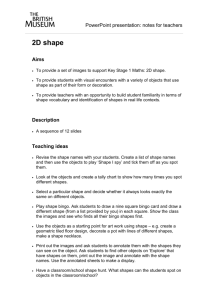Level 6 Reaching
advertisement
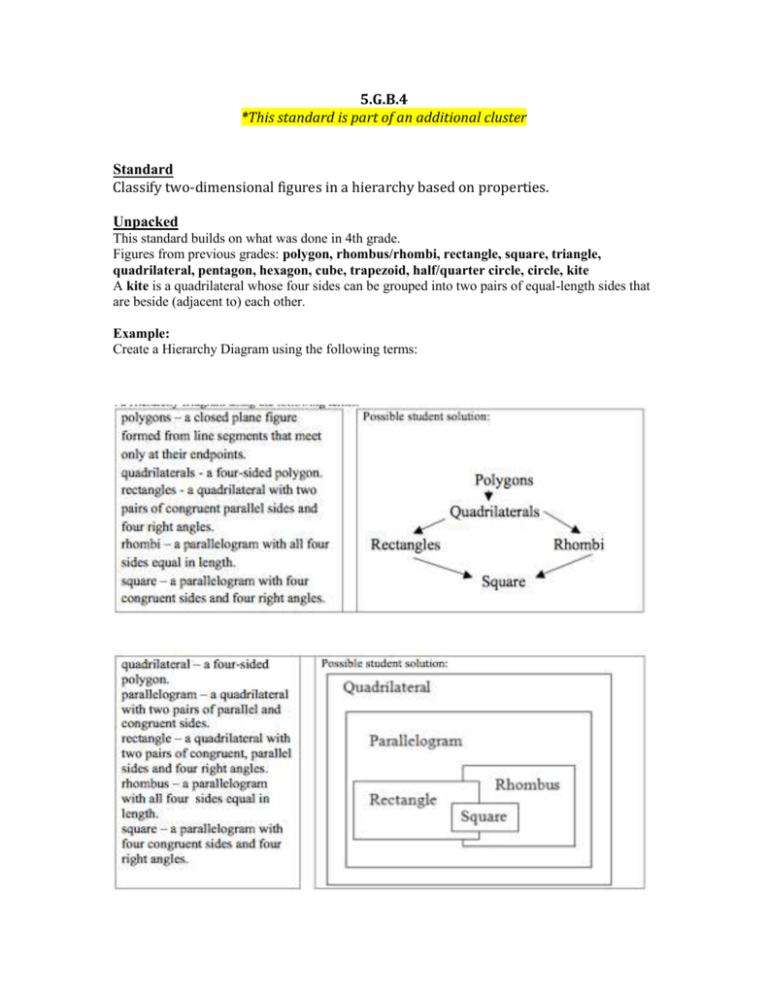
5.G.B.4 *This standard is part of an additional cluster Standard Classify two-dimensional figures in a hierarchy based on properties. Unpacked This standard builds on what was done in 4th grade. Figures from previous grades: polygon, rhombus/rhombi, rectangle, square, triangle, quadrilateral, pentagon, hexagon, cube, trapezoid, half/quarter circle, circle, kite A kite is a quadrilateral whose four sides can be grouped into two pairs of equal-length sides that are beside (adjacent to) each other. Example: Create a Hierarchy Diagram using the following terms: Student should be able to reason about the attributes of shapes by examining: What are ways to classify triangles? Why can’t trapezoids and kites be classified as parallelograms? Which quadrilaterals have opposite angles congruent and why is this true of certain quadrilaterals?, and How many lines of symmetry does a regular polygon have? Level 1 Entering Level 2 Emerging Level 3 Developing Level 4 Expanding Level 5 Bridging Create a hierarchy diagram of 2-D shapes based on properties by working with a partner to label categories of pre-sorted shapes using a word bank. Create a hierarchy diagram of 2-D shapes based on properties by working with a partner to sort shapes into prelabeled categories. Create a hierarchy diagram of 2-D shapes based on properties by working with a partner to label categories of pre-sorted shape names using a word bank of categories. Create a hierarchy diagram of 2-D shapes based on properties by working with a partner to complete an empty diagram using a word bank of shape names and categories. Create a hierarchy diagram of 2-D shapes based on properties by working with a partner. ELD Standard #3: English Language Learners communicate information, ideas, and concepts necessary for academic success in the content area of Mathematics. Level 6 Reaching Domain: Writing Questions to check for understanding/ increase the rigor? • Is a rhombus always a square? Is a square always a rhombus? Use examples to support your answer. • How are square, quadrilateral, rhombus, rectangle, parallelogram and trapezoid alike and different? • Scott made a rectangle, but the teacher said it is not a rectangle. How can Scott check to know if it is a rectangle or not?
